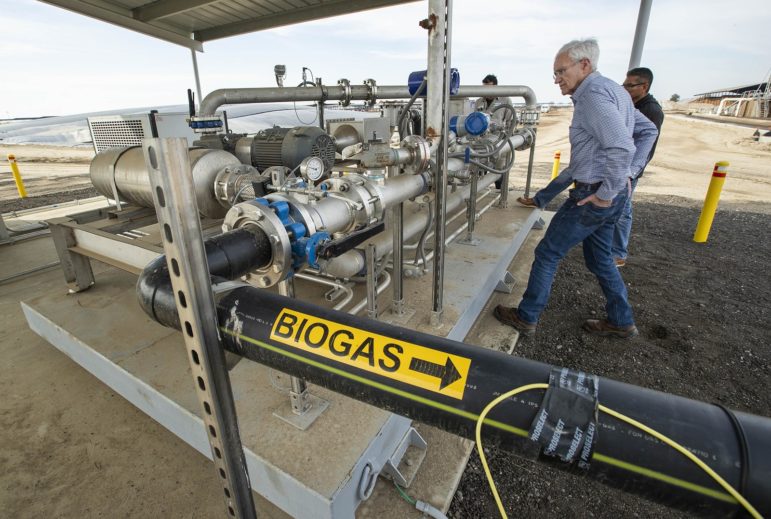
In a nutshell:
– The production of renewable natural gas (RNG) is as economically, resource, and process-intensive as mining fossil gas.
– At maximum scale, RNG and synthetic gas produced from ecologically sound sources would only replace roughly three to seven percent of today’s gas use.
– RNG poses the same negative health, pollution, and emissions impacts as transporting and burning fossil gas and costs three to 18 times more.
– There are limited but specific circumstances, especially in heavy-duty transportation and industrial processes, where RNG is a viable alternative to fossil gas.
Here in Minnesota as we work to avoid the worst impacts of climate change, we know that we must transition our entire economy to be carbon-neutral by mid-century. This means dramatically shifting away from burning fossil fuels for energy towards the adoption of zero- and low-carbon alternatives. Fresh Energy’s staff of policy analysts and researchers have spent years on pathways to rapidly decarbonize electricity generation through wind and solar, in addition to other policies and practices that advance fossil gas alternatives in the transportation and building sectors. All of these will have a role to play in decarbonizing our energy system.
A piece of the puzzle that has been getting mainstream, regional, and organizational interest is a fossil gas alternative called “renewable natural gas,” or RNG. But, what is RNG? Is it really a sustainable, renewable, and viable fuel source that should be considered as we work to decarbonize our energy systems?
RNG is framed as an environmentally friendly way to repurpose existing organic matter such as animal waste, sewage at treatment facilities, crop residuals, and food waste from landfills into a usable biomethane gas that could take the place of fossil natural gas. But, in reality, the production of RNG is as economically, resource, and process-intensive as mining fossil gas. Beyond that, transporting and burning RNG presents the same negative health, pollution, and emissions impacts as fossil gas.
In this blog post we will tackle some of the key questions about RNG that we are seeing arise in both the industry as well as in public circles.
Is RNG a good way to reuse organic waste?
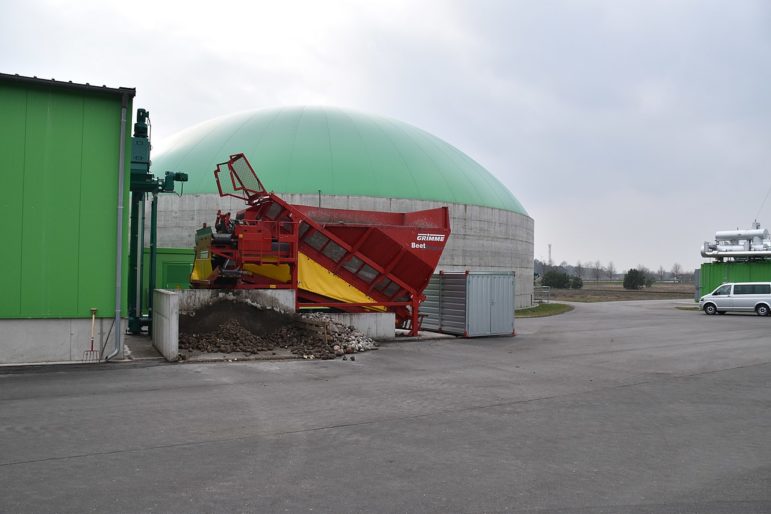
In theory, yes, but in practice, RNG is very limited in scale. Even if we were to use all available materials, or feedstocks—like crop residuals, biomass, energy crops, and food waste—in the United States to produce RNG, the Natural Resources Defense Council (NRDC) estimates that the RNG and synthetic gas produced from ecologically-sound sources may be able to replace only roughly three to seven percent of today’s gas use, at projected costs that are many times the current price for fossil gas.
It is also important to note that the environmental benefits of RNG vary by the type of feedstock used to create it. For example, RNG that is made from a landfill is generally less beneficial than RNG made from cow manure. This is because most landfills are capped—meaning that gases produced by the landfill waste are not released into the atmosphere—and captured gases are burned to produce carbon dioxide in a process called flaring. So, the main benefit of creating RNG from landfills is limited to avoiding carbon dioxide emissions. By comparison, dairies sometimes store manure in open lagoons, where gases produced by the manure flow freely to the atmosphere. Capturing these emissions—a mix of methane and carbon dioxide—to create RNG avoids releasing a mix of more potent greenhouse gases into the atmosphere. However, the potential expansion of cow, pig, and poultry feedlots to produce RNG presents other environmental and public health concerns.
Is RNG cheaper than fossil natural gas?
No, RNG is very expensive to produce—about three to 18 times more expensive than the current market price for fossil gas, according to the American Gas Foundation. Weighing the high cost of production against the negative health and climate impacts of RNG does not present a compelling argument for larger-scale production or adoption of RNG. What’s more, RNG is primarily used as a vehicle fuel today, not as a source of thermal energy. The price of RNG today is often determined by transportation credit markets, with competition between transportation and thermal customers presenting another challenge to deploying limited volumes of RNG at scale.
How reliable is RNG?
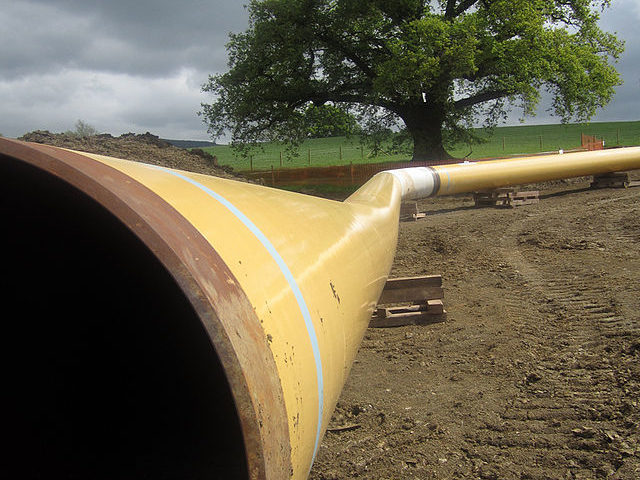
Transporting RNG presents the same challenges and dangers as transporting fossil gas. If a pipeline bursts or breaks, the outcome is equally disastrous. Additionally, because the production of RNG is dependent upon anaerobic digesters —which must be kept warm—cold weather presents serious difficulties. During cold months, RNG requires much higher energy consumption for production.
Is RNG more environmentally friendly than fossil natural gas?
Unfortunately, no. RNG is about 90 percent methane gas and methane is 84 times more potent a greenhouse gas than carbon dioxide. Our current natural gas transition and distribution system depends upon a network of pipelines that serve as a significant source of carbon emissions due to widespread leakage. Because of this leakage, the moment RNG or other fossil gas alternatives enter a pipeline, their climate value is dramatically reduced. To decrease its negative climate impacts, RNG should be produced close to where it will be consumed, reducing reliance on existing leaky pipelines. In sum, because it requires a larger amount of energy for production and poses the threat of methane leakage during both production and transportation, RNG can be a backwards step on climate goals – unless the production site and the usage site are one and the same.
Is RNG less harmful to human health than fossil natural gas?
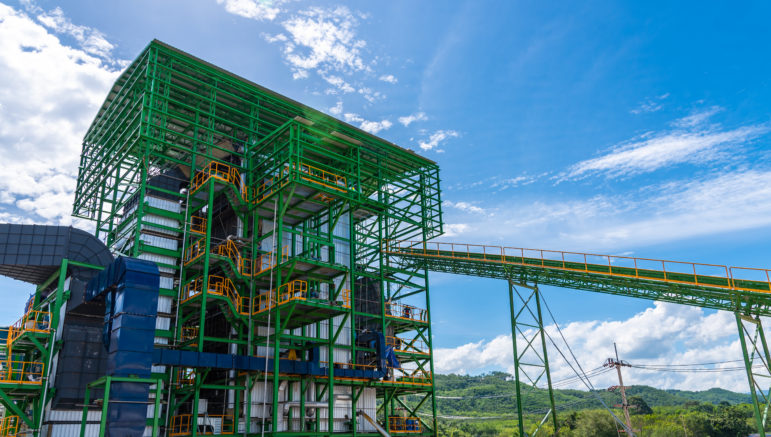
No, RNG poses the same risks to human health as burning fossil natural gas. The primary ingredient of RNG is methane. When burned, methane forms nitrogen oxides and other harmful air pollutants which can lead to respiratory problems, hospitalizations, and premature death. In addition, even after treatment for injection into gas pipelines, the potential residual toxicity of biomethane has yet to be fully understood. The threats presented by air pollution fall hardest on Black and Indigenous Minnesotans and other communities of color. These communities are disproportionately affected by air pollution due to our existing social structures like inequitable access to health care, as well as disproportionate exposure to environmental hazards caused by zoning, redlining, and other discriminatory policies. Key solutions for reducing pollution in these communities are to pursue beneficial electrification and deep energy efficiency wherever possible.
Is there a place for RNG as a low-carbon fuel as we work to decarbonize our energy system and electrify our buildings and transportation?
RNG is absolutely a tool that should be considered in Minnesota’s electrification and decarbonization policies. To be carbon-neutral across our economy by 2050—as the science dictates, we must to avoid the worst impacts of climate change—we must efficiently and effectively decarbonize, which will require a multi-sector approach. Fresh Energy believes that, due to its high price and limited scalability, RNG as a decarbonization solution is best paired with heavy duty transportation and industrial processes instead of an everyday alternative to fossil gas.
Case Study: Inver Grove Heights considers RNG
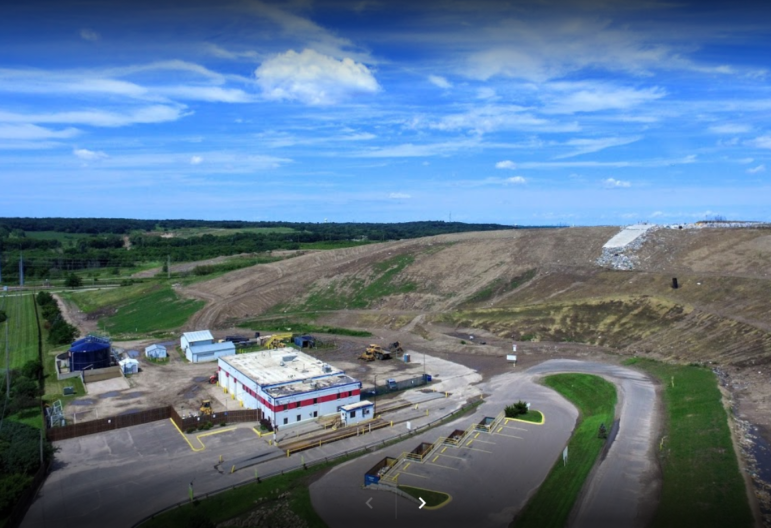
Despite the known challenges RNG presents, there are still new local and regional RNG initiatives in the works that will need intensive vetting and scrutiny. A primary example is the discussion about selling Inver Grove Heights’ Pine Bend Sanitary Landfill to a Texas company planning to build a RNG plant on the site as well as a pipeline to transport the RNG. The site previously housed a facility that turned the methane gas produced by decomposing trash into electricity, but the facility was closed in 2019 as it became uneconomical to operate.
Based on what we have covered in this blog post, the proposed plan in Inver Grove Heights raises multiple red flags. Obvious problems include the plant’s use of pipelines to transport the RNG, as well as the plan to generate RNG from landfill gas. Generating RNG from landfills is not only the least environmentally beneficial way of creating the gas—it also poses more serious health ramifications.
Fresh Energy is working across the energy sector at legislative, agency, and local levels to help Minnesota meet its carbon reduction and climate goals and swiftly decarbonize our energy system. As an organization, we recognize that, in some cases, RNG presents an opportunity. With that said, we’re in a time where many RNG projects are being framed as “zero carbon” or “environmentally friendly.” As always, we encourage Minnesotans and decision makers to carefully evaluate each proposal on a case-by-case basis, and to consider costs, who stands to benefit, greenhouse gas impact, the use of existing gas infrastructure, and more.
What is clear is that the alternative fuels sector is growing and changing quickly, and Fresh Energy staff are staying on top of the latest research and developments. Stay tuned for future updates.
Further reading:
- RMI, “Gas Stoves: Health and Air Quality Impacts and Solutions”
- NRDC Issue Brief, “A Pipe Dream or Climate Solution?”
- World Resources Institute, “The Production and Use of Renewable Natural Gas as a Climate Strategy in the United States
- Energy News Network, “Analysis: Why utilities aren’t doing more with renewable natural gas.”
- Environmental Research Letters, Volume 15, Number 8, “At scale, renewable natural gas systems could be climate intensive: the influence of methane feedstock and leakage rates”

